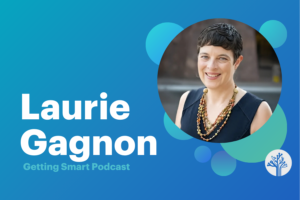10 Simple Lesson Plans for Scaffolding Student-Led Projects

When working with my high school students on implementing their own student-led projects, I adapted much of my project-based learning (PBL) curriculum from a guide titled Youth Engaged in Leadership in Learning (YELL), created by Stanford University’s John W. Gardner Center for Youth and Families.
Adapted from the YELL Curriculum Guide (I specifically used Unit 3; Unit 1 is on Communication and Unit 2 is on Leadership- both have great ideas), this was my (shortened) version of my 10 lesson plan for scaffolding student-led projects in my classroom.
Getting Started with Student-Led Projects
- Assess. Decide how you will access the project and student grade(s) ahead of time and communicate that at the start. I suggest some sort of electronic portfolio (I used Google Docs) where assignments and formative assessments exist at the end of each lesson. At the end, there I had a performance-based assessment with a rubric. There was also a final reflection paper due at the end of the project.
- Adapt. Flex this up or down according to grade level and skills.
- Relate to Content. This will work in middle and/or high school advisory, social studies, language arts, or other project-based block.
- Plan. This can happen in 2 weeks or 6 weeks (or longer). You could also massively extend lessons, especially lessons 6, 7 and 8 and this could become a 6+ week unit. Use your creativity and know what will work best for your students. You are on your way to building successful student-led projects.
- Involve. Involve other adults in the building, and let parents know this is happening. Line up adult mentors who could come in to the building and help students on particular projects that line up with their expertise, or use online tools to connect students to mentors/adult experts.
Lesson 1 – The World is Ours. What Do You Care About?
Have students brainstorm ideas, problems and concerns. In my classroom, we did this in groups and the list was LONG. It filled two butcher paper sheets long. Students can brainstorm. There are no wrong answers. Examples include: drug abuse, lack of internet at home, more access to video games (this will get listed as an injustice), too many stray dogs in your neighborhood, alcoholism, homelessness. Debrief.
Lesson 2 – Assets and Deficits: Mapping Your Community
Print a map of your community – decide on the radius around your community. Mark assets (parks, schools, playgrounds, community centers, fire stations and the like). Next have students mark deficits, places that cause problems or are to be avoided. Hold a discussion. Ask questions like how could their community have more assets and less deficits? What are ways to solve problems? Post community maps around the room.
Lesson 3 – Charity and Change
This was always one of my favorite lessons because there were so many “a-ha”s. A quick Google search reveals many differences between charity and change. Have students discuss in small groups and give examples. The difference between giving a homeless person $5 and partnering with a barber shop so that homeless people can get free haircuts exemplifies the difference between charity and change. Have students draw and diagram social problems and identify some root causes. Then have them think through ideas that address root problems, rather than giving away money.
Lesson 4 – What Do You Value? Acting on What Matters
After creating a list of problems in the world and issues they care about in their communities, provide students with a select number of colored dots (or Hershey’s kisses). Have them vote on what they care about using their “coins”. What emerges victorious? Structure this accordingly. Hold a reflective conversation or ask for a journal about what really matters. This is where students identify core values. Talk about the word “values.” Read some excerpts on various perspectives about what others value. Then, each student can decide on words (limit them to 3-5 words) that illustrate their values. Examples include: community, family, education, physical activity, beauty. This will help them in then making some big decisions. At this stage, have them identify a topic and a value. Post these around the room.
Lesson 5 – What’s in a Question: Designing “Big Picture” Questions for Big Results
Once they have their topic and their value, then have students design questions that illustrate their curiosities. There is no wrong way to do this. I love the simple KWL (Know, What to Learn, Learned). If they chose a project having to do with the environment (topic) and a value (a sustainable earth), what do they want to know more about? Have a big brainstorm session and then conversations about their questions will help students hone their inquiry. This lesson ends when everyone has 3-5 good solid questions. (Note: this may require some individual meetings if any students are stuck).
Lesson 6 – Becoming A Researcher: Exploring Qualitative & Quantitative Research Methods
Explain the terms “qualitative” and “quantitative”. These words are not too big for middle and high school students- they will get it. Tell them they will be doing a little of both. For quantitative, use one student’s questions and design a math problem that students could work together to solve. For qualitative, conduct a short interview “fishbowl” style. This will then introduce these concepts as you also have them practice, and this sets students up well for lesson 7.
Lesson 7 – Surveys, Interviews, Social Media and More: Inquiry in the Age of Technology
Show all the various ways people conduct research. There are so many examples. There are ways to conduct surveys on Twitter, Poll Everywhere, Survey Monkey, etc. There are simple ways to start campaigns using hashtags and also answering questions via video. Allow the students to think through ways to conduct research into their bigger questions while thinking about what they really want to know and how will they show what they learned (in lesson 9). It’s great if you can show them some student examples. And if you do this year after year with students, bring back former students to show their projects.
Lesson 8 – Let’s Do It: Inquiry in Action
Help them chunk down their research and give them some time in class to do it and also let them know their might be some homework. If choosing interviews, they might interview students and/or staff members at the school during class, or they may be on devices. Make the parameters clear.
Lesson 9 – Read, Share & Act: Putting It All Together to Support Your Own Learning (& Others)
Remember the 4 P’s: Students can:
- Post
- Publish
- Present
- Create a Portfolio
You can have a big celebration and invite other students and adults including parents to the presentations, or have the presenting happen at student-led conferences. Use the student-led project as an opportunity for potential traditional or social media coverage by inviting your local newspaper or using Twitter or Pinterest to share student projects (with their permission) or have them share on Instagram (if age appropriate). Have them blog about their work. Pick a medium and share. The more public and authentic the better.
Lesson 10 – Reflections Aren’t Just for Mirrors: Why Reflection Matters
Buck Institute for Education (BIE) has great free resources (here’s one format) and you probably have a slew of great reflection questions for project’s conclusion. And don’t forget to celebrate!

Have you tried student-led projects and have other specific tips? Share them with me @belathram and @Getting_Smart or by commenting below.
Want Getting Smart to help write curriculum and/or lead professional learning on the latest innovations in learning? We convene, connect and lead adults in ways that are engaging and are based on best practices, practical classroom experience and research. Contact us at [email protected] with the title “learner experience” for more information.
For more, check out:
- 9 Resolutions & 9 Resources for Your PBL Classroom
- 23 Questions that Cultivate Deeper Learning Mindsets
- We are Wired to Learn, Change and Engage
Stay in-the-know with all things EdTech and innovations in learning by signing up to receive the weekly Smart Update. This post includes mentions of a Getting Smart partner. For a full list of partners, affiliate organizations and all other disclosures please see our Partner page.








0 Comments
Leave a Comment
Your email address will not be published. All fields are required.